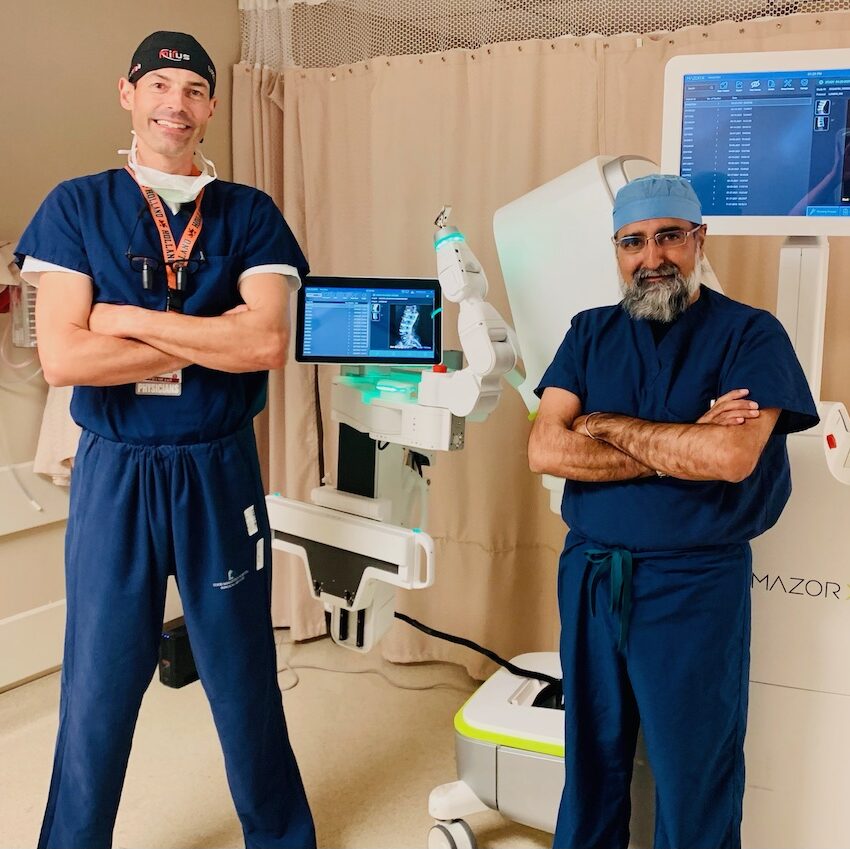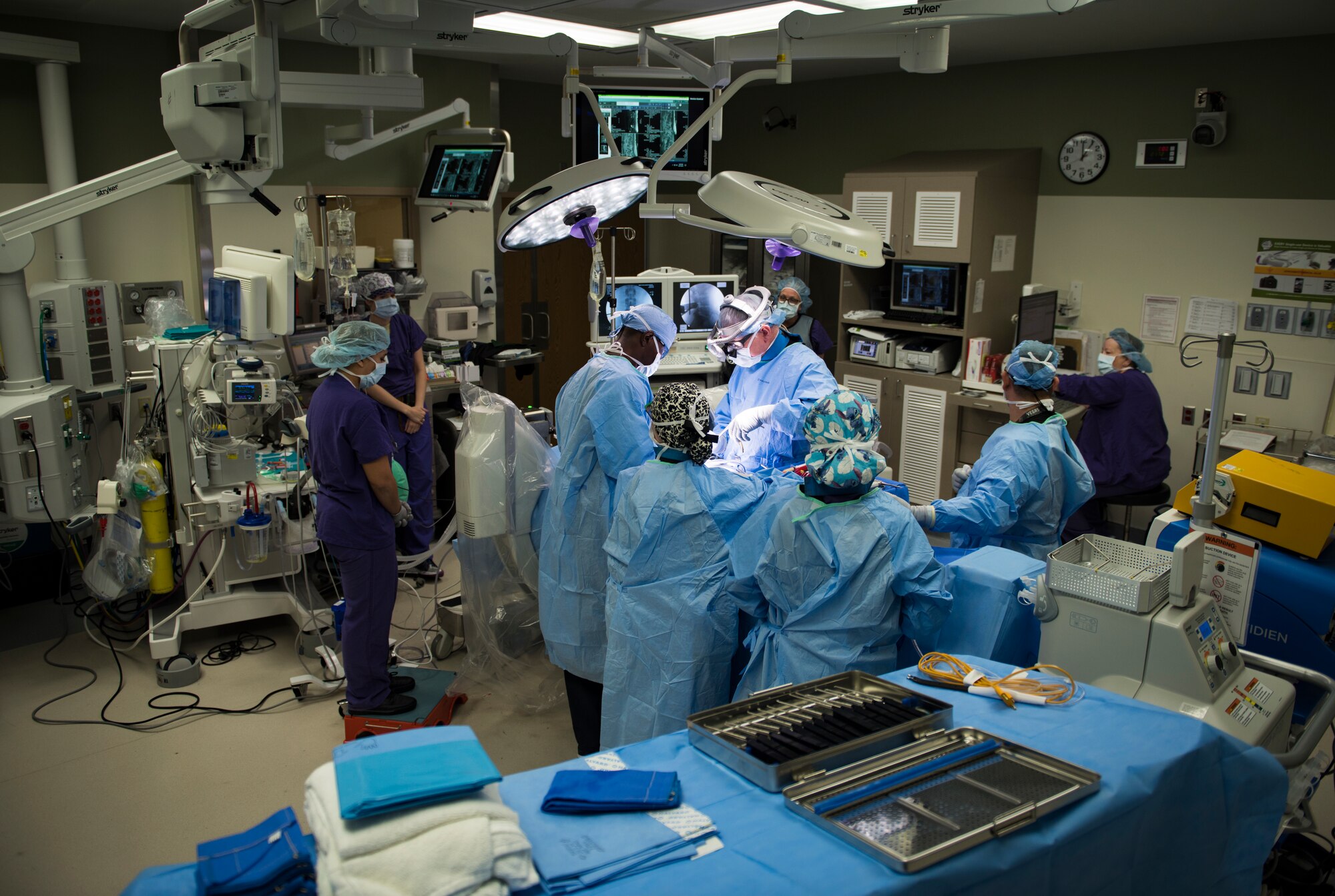Typical Procedures Carried Out by the Best Spine Surgeons in St Louis MO
Typical Procedures Carried Out by the Best Spine Surgeons in St Louis MO
Blog Article
A Review of Back Problems That Often Lead To Surgical Treatments
Spine conditions such as herniated discs, spine constriction, and degenerative disc illness often demand medical treatments when conventional therapies fall short to ease consistent signs and symptoms. Recognizing the nuances of each problem and the corresponding medical options, such as discectomy or spine fusion, is important for effective monitoring.
Herniated Discs
Although lots of people with herniated discs might locate relief with traditional treatments, surgery becomes a necessary factor to consider when signs continue or aggravate - best spine surgeons in st louis mo. A herniated disc happens when the soft internal gel of a back disc protrudes with its outer layer, possibly leading and pressing close-by nerves to discomfort, numbness, or weakness in the extremities
Conventional administration commonly includes physical therapy, discomfort medicines, and corticosteroid shots, which aim to lower inflammation and enhance function. In situations where these techniques fail to alleviate devastating signs, surgical options might be discovered.
One of the most common surgery for herniated discs is a discectomy, which includes the removal of the herniated section of the disc to alleviate pressure on the impacted nerve root. In a lot more serious cases, spinal combination may be required to support the affected vertebrae.
Individuals are suggested to discuss the prospective risks and advantages of surgical procedure with their healthcare provider to make a notified decision. Ultimately, the objective of any kind of surgical intervention is to bring back feature, reduce discomfort, and boost general lifestyle for people struggling with herniated discs.
Back Stenosis
Spinal stenosis happens when the spaces within the back narrow, causing raised pressure on the spine and nerves. This condition can create in different regions of the spinal column, including the cervical and back areas, often due to age-related changes, such as degenerative disc disease, joint inflammation, or thickening of tendons.
Clients with spine constriction might provide with signs and symptoms that include pain, pins and needles, tingling, or weak point, primarily in the arms or legs. These signs and symptoms can be exacerbated by tasks that involve standing or strolling, typically leading individuals to look for alleviation via conventional treatments like physical therapy, medicines, or epidural steroid injections.
However, when these non-surgical treatments stop working to provide adequate relief, medical alternatives may be taken into consideration. Common surgeries for spine stenosis consist of laminectomy, which involves the elimination of part of the vertebra to alleviate stress, and spine fusion, which supports the affected area. The choice to seek surgical treatment is normally based on the severity of symptoms, the degree of useful impairment, and the overall health and wellness of the client. Prompt diagnosis and administration are essential to stop more neurological compromise and improve high quality of life.
Spondylolisthesis
Spondylolisthesis happens when one vertebra slides ahead over one more, bring about imbalance of the back. This problem can arise from various aspects, consisting of hereditary defects, injury, or degenerative adjustments in the spinal column. It is most typically observed in the lumbar region, particularly at the L4-L5 and L5-S1 degrees.

When non-surgical methods stop working to soothe signs or when considerable nerve compression is existing, medical intervention blog might be called for. Surgical options can include spine blend or decompression treatments, aimed at bring back placement and easing neurological signs and symptoms.
Degenerative Disc Illness

People with DDD frequently experience pain that may emit to the arms or legs, depending upon the affected area of the back. The problem can be diagnosed with a mix of scientific examination, imaging studies, and individual background. Therapy options typically begin visit their website with traditional measures, consisting of physical treatment, discomfort administration, and way of living alterations. When these approaches fall short to provide appropriate relief, medical interventions might be thought about.
Surgical alternatives for DDD might include spine fusion or artificial disc replacement, targeted at supporting the influenced segment and relieving pain (best spine surgeons in st louis mo). Eventually, the choice of therapy is individualized, considering the intensity of the problem, person health and wellness, and way of living aspects
Spinal Lumps

What elements contribute to the advancement of lumps within the back, and how do they materialize in people? Spine tumors can occur from various aspects, including genetic predisposition, environmental influences, and pre-existing medical problems. They can be classified as main growths, coming from in the spinal column, or second growths, which spread from various other areas of the body. Individuals may present with a series of signs, including local pain, neurological deficits, weak point, or modifications in bowel and bladder function, relying on the growth's size and area.
Medical diagnosis generally includes imaging research studies such as MRI or CT checks, which aid define the growth's qualities and influence on bordering structures. In evaluating treatment options, the tumor's quality, type, and location are crucial considerations. Surgical intervention may be warranted to ease symptoms, obtain a biopsy, or eliminate the tumor totally. The objective of surgical treatment is often to unwind neural elements and stabilize the spinal column. Adjuvant treatments, consisting of radiation or radiation treatment, may also be necessary depending upon the growth's nature. Early detection and intervention are crucial for optimizing outcomes in patients with spinal lumps.
Final Thought
In recap, spine problems such as herniated discs, spine stenosis, spondylolisthesis, degenerative disc illness, and back lumps often require medical intervention because of their prospective to cause substantial pain and useful problems. While traditional treatments may offer short-lived alleviation, surgical alternatives become critical when signs worsen or persist. Prompt medical diagnosis and intervention play an essential duty in bring back feature and boosting the lifestyle for damaged people, index underscoring the relevance of comprehensive spine treatment.

Report this page